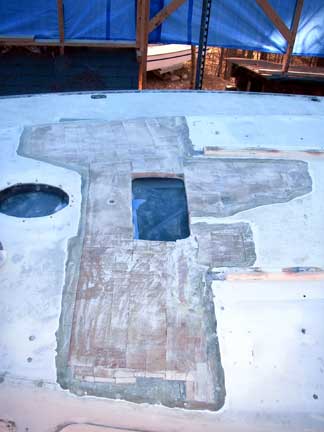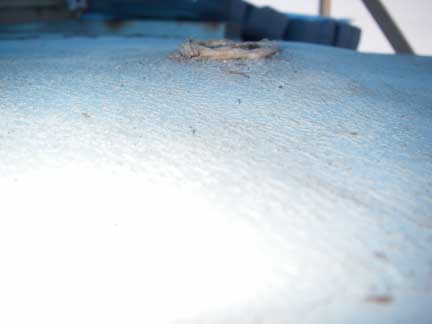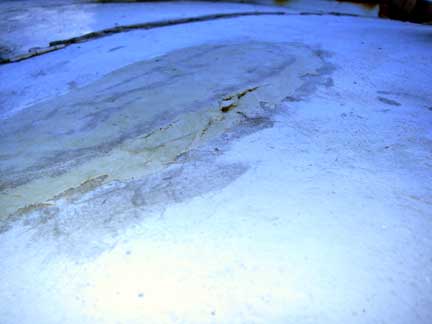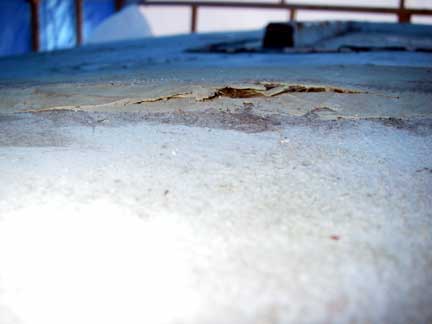Autopsy Report

This is a view of the current condition of the area shown above where the deck had domed. I cut out for a new ventilation hatch, and cut away the top skin and removed rotten and/or delaminated core from the surrounding area, prepared the area, and glued in new balsa core. I've started grinding out bevels on the adjacent top skin for laying up a new skin.
To orient yourself, you can see the oval hole in the deck for the mast collar to the left, a rectangular hole for the new ventilation hatch (center), and the rails for the companionway sliding hatch (right).
The deck gland for the hydraulic line (as pictured earlier in this thread) was located right at the forward edge of where the ventilation hatch would end up, so I moved it forward 2 inches (you can see the small hole between the mast hole and the vent hatch hole).
The areas outboard of of the companionway hatch (both sides) are cored with plywood for supporting lots of winches and other hardware for halyards and control lines, etc..). The area between the companionway rails and forward was cored with end-grain balsa. At the transition between the two types of coring, the top and bottom skins come together, so the plywood and balsa are isolated from each other.
OK, the area forward of the companionway hatch is the area where the frost-heaving occurred. In this area, and off to both sides, the balsa had delaminated from the bottom skin but was still very well adhered to the top skin. The balsa was very wet but not totally black with rot (although it was just starting to decay from the bottom up).
Clearly, this area had been re-cored once before (consistent with the previous owner's report that he had the deck "professionally" recored once already), but they had not done an adequate job of adhereing the new balsa core to the bottom skin... Interestingly, the "scrim" from the balsa was adhered to the bottom skin. Other evidence that this area had been re-cored once before is that the top skin was made of chopped strand mat instead of woven roving as elsewhere, and that there was no molded in non-skid pattern as elsewhere.
In the area between the companionway hatch rails, the balsa wood
was totally black with rot -- this area obviously had
not been re-cored, as the previous "professional" effort had stopped short of actually unbolting the sea hood over the companionway slider and chasing the rot to its end.
SO, back to the frost-heaves. My hypothesis now is that the wet balsa wood expands horizontally (across grain) when frozen, more so than vertically (along the grain). If the balsa is adhered to both skins, it is constrained and can't go anwhere. If it is delaminated from both skins, then it just crushes itself. It is delaminated from one skin, but still attached to the other, then the attached skin will experience a buckling deformation when the saturated wood freezes.
That's it for tonight (I'll have more project updates soon...)
Regards,





